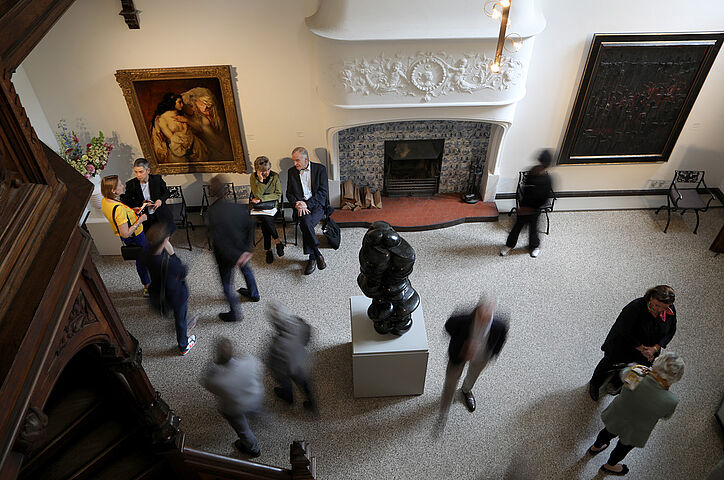In 1775, at a time when the Kurfürstendamm was no more than a wide riding path that connected Berlin’s city palace Unter den Linden with the hunting castle of Grunewald, Friedrich the Great ordered a “royal pheasant garden” to be laid out on the site of the present Fasanenstraße (Fasanen Street). The princely oasis was later destined to make way for the expanding metropolis but left behind its poetical name.
Following the foundation of the German Reich, Bismarck succeeded in making out of the riding path a splendid boulevard resembling the Champs Elysées in Paris. Due to its excellent location, Fasanenstraße developed into one of the most prominent addresses for Berlin’s aristocratic and upper middle class families, and in 1891-92 the architect Hans Grisebach (1848-1904) built a magnificent house for his family, which also included an atelier for himself. It was one of the first single-family townhouses in Berlin. Grisebach, a success in his field, had designed businesses and private homes in Berlin and throughout the entire German Reich, including the residence of the “museum general” Wilhelm von Bode on Uhlandstraße as well as that of the poet Gerhart Hauptmann. During the 1920s the artistic prominence of the culture metropolis Berlin also migrated to the area, including the film diva Asta Nielsen. Generously designed and laid-out restaurants also appeared, such as the Wintergarten ensemble.
Fasanenstraße was severely damaged during the Second World War and several houses, through makeshift restoration, were transformed into provisional spots of Berliner nightlife. Serious consideration of the quarter’s future only became an issue during the mid 70s, when public discussion concerning the architecture of the 19th century and the value of its maintenance arose. Violent argument had just begun concerning the fate of the Wintergarten ensemble, the addresses Fasanenstraße 23, 24, and 25. For a while it appeared as if all three would be doomed to either a future as retail space or be torn down to make way for a more “car-friendly city”. The historicism of the 19th century was low on the prestige scale of historical architecture. During the 70s groups of visitors were led down Fasanenstraße to stand in front of the Grisebach villa and mourn its façade as an especially disgusting example of architectural hypocrisy.
It was only in 1980 that the ensemble was entered on Berlin’s list of regional historical monuments. The city then decided to convert the Wintergarten building into the Literaturhaus (House of Literature) and in 1984 the Deutsche Bank purchased numbers 24-25 and painstakingly restored them to their historical accuracy. Number 24 became the Käthe Kollwitz Museum. Through its lavish restoration number 25, the Villa Grisebach, bears brilliant witness to the style of living at the turn of the century around 1900.
The Grisebach villa became seat of the newly-founded auction house Grisebach upon completion of restoration in 1986.

